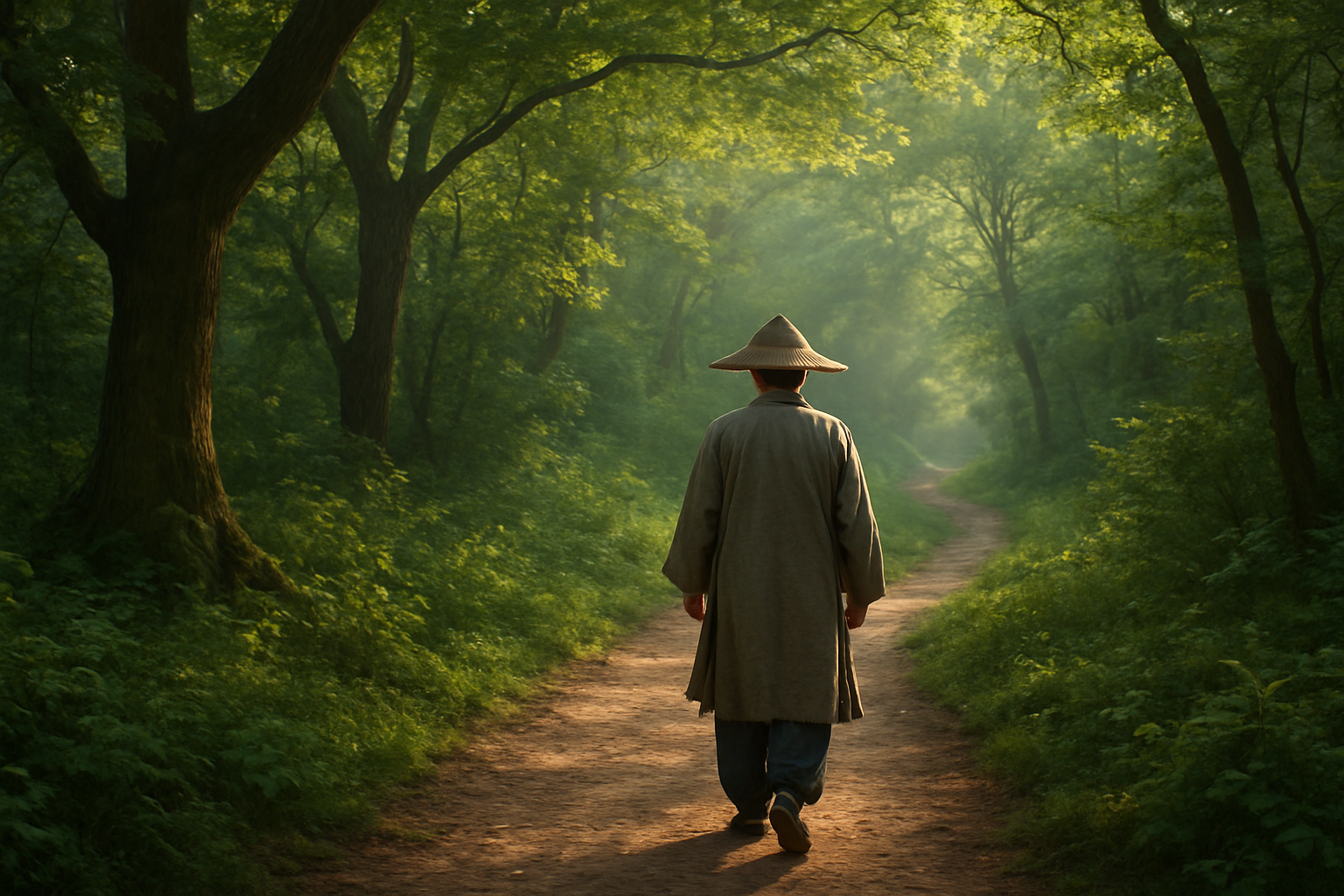The Path Returns Itself: The Daoist Cycle of Journey and Home
In the philosophies of Daoism, the journey and home are seen not as separate entities, but as parts of a continuous cycle. This cyclical understanding of life’s path offers a framework that is as ancient as it is relevant in today’s world. The essence of this philosophy can be encapsulated in the concept that the path inevitably leads back to the origin, a return that is both literal and metaphorical.
The Daoist Philosophy of the Path
Daoism, or Taoism, is one of the major schools of Chinese thought, the roots of which can be traced back more than two millennia. At the heart of Daoism is the concept of Dao (or Tao), often translated as “the Way.” As Lao Tzu famously wrote in the Tao Te Ching, “The Dao that can be told is not the eternal Dao; The name that can be named is not the eternal Name” (source).
- Path as a Cycle: According to Daoist thought, life is an unending cycle of transformation. The journey itself is not linear but cyclical, and its end is a return to the beginning.
- Returning to the Source: This notion is summarized in the Daoist adage, “Returning is the movement of the Dao” (source).
- Interconnectedness: The realization of interconnectedness is vital. As all paths are cyclical, our encounters along the way contribute to our understanding of self and universe.
The Journey and Its Symbolism
The journey in Daoism represents not just physical movement but personal and spiritual growth. It’s about discovering the rhythm of life and aligning oneself with it.
- Metaphorical Journey: While a physical journey can enlighten, Daoists believe that the inner journey is of equal, if not greater, importance.
- Harmony with Nature: Following the path entails a harmonious relationship with nature. Zhuangzi, another prominent Daoist philosopher, observed, “He who follows the Dao is at peace” (source).
- Understanding through Experience: Life’s challenges and experiences form the learning ground for Daoist wisdom.
The Concept of Home
In Daoism, “home” symbolizes more than a physical place; it is an internal state of balance and authenticity. The journey may cover great distances, but its ultimate purpose is to rediscover this inner home.
- Inner Peace: The return home is synonymous with the attainment of inner tranquility and self-understanding.
- Unity with the Universe: Homecoming reflects unity with the universe and an understanding of one’s place within it.
- Contentment: It represents contentment, which the Dao De Jing emphasizes: “He who knows that enough is enough will always have enough” (source).
The Interplay of Journey and Home
The symbiotic relationship between the journey and home is central to Daoist tradition. It reflects the balance between external exploration and internal realization.
“The wise man is one who knows what he does not know,” aligning with the cyclical notion where the journey of discovery leads to the realization of inner ignorance and a return to simplicity.
- Dynamic Equilibrium: In Daoism, one cannot exist without the other. The journey craves completion through return, highlighting an everlasting dance between adventure and solace.
- Parity and Balance: Just as yin and yang encapsulate duality in unity, the journey creates a necessary contrast to the peace found at home.
Modern Reflections
Today, amid the rapid pace of life, the Daoist cycle of journey and home offers a grounding perspective. It encourages mindfulness and suggests that the path to fulfillment is not through continuous seeking, but in finding contentment where we are.
- Mindful Exploration: Embrace every new challenge as a necessary stop on the cyclical path rather than an endpoint.
- Find Center in Chaos: Discovering balance and peace within oneself is the modern reflection of returning home.
Understanding this dynamic enriches our lives—a reminder that no matter the paths we tread, they all bring us back home, in essence, fuller and more complete.


